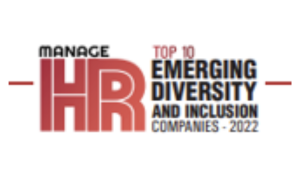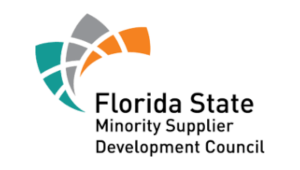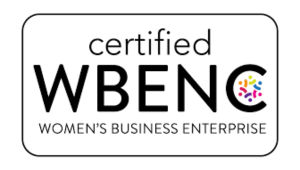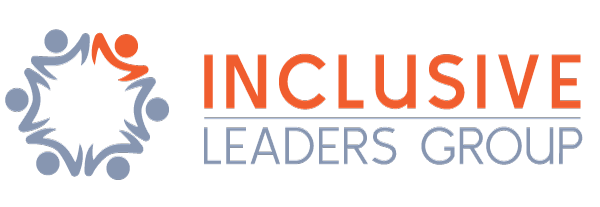“Confronting the impact of racism will not be easy…I know that we can do this if we work together. I certainly hope you will lean in and join me.” – Rochelle P. Walensky, MD, MPH, Director, CDC
Racism is a Serious Threat to the Public’s Health
I’m very familiar with the adverse impact of racism on health equity, from my world view and lens as a Black-American woman, daughter of a physician, and my past work at Ascension Health System, one of the largest private healthcare systems in the U.S. ranking second in the country by number of hospitals as of 2019. Prior to launching Inclusive Leaders Group, I initiated and ran Health Inclusion, a HR and Diversity Consultancy to healthcare and non-profit organizations that provided leadership development, workforce diversity & inclusion, cultural competency, strategic talent management and patient care solutions on both a pro-bono and contract basis.
According to the CDC, Racism—both interpersonal and structural—negatively affects the mental and physical health of millions of people, preventing them from attaining their highest level of health, and consequently, affecting the health of our nation.
A growing body of research shows that centuries of racism in this country has had a profound and negative impact on communities of color. The impact is pervasive and deeply embedded in our society—affecting where one lives, learns, works, worships and plays and creating inequities in access to a range of social and economic benefits—such as housing, education, wealth, and employment. These conditions—often referred to as social determinants of health—are key drivers of health disparities within communities of color, placing those within these populations at greater risk for poor health outcomes.
The data shows that racial and ethnic minority groups, throughout the United States, experience higher rates of illness and death across a wide range of health conditions, including diabetes, hypertension, obesity, asthma, and heart disease, when compared to their White counterparts. Additionally, the life expectancy of non-Hispanic/Black Americans is four years lower than that of White Americans. The COVID-19 pandemic, and its disproportionate impact among racial and ethnic minority populations is another stark example of these enduring health disparities.
Many Workplace Wellness Programs Have Overlooked Health Equity
Workplace wellness programs have many components to help improve health outcomes and decrease health disparities. These components include:
- Health and wellness education
- Smoking cessation programs
- Fitness center memberships
- Nutrition aids
- Biometric screenings
These services are often in exchange for health insurance premium reductions. However, many workplace wellness programs have overlooked health equity because they’ve missed the opportunity to incorporate the concepts of diversity, equity, and inclusion into their corporate wellness program.
The Office of Minority Health, part of the U.S. Department of Health and Human Services, cites the importance of recognizing and addressing cultural differences that exist within health care. By recognizing cultural differences, such as those that exist among health beliefs, practices, cultural needs and linguistic needs, a wellness program can be better tailored to meet the needs of a diverse population and ultimately produce positive health outcomes.
Cultural competency refers to awareness of one’s own cultural identity, as well as awareness of one’s views about cultural differences. Cultural competency also includes how a person interprets and reacts to such differences based on their own cultural identity. Cultural competency is often demonstrated through an individual’s ability to learn about cultural and community norms. Cultural competency is especially necessary in organizations with a diversified workforce and will assist in successfully implementing wellness programs and maximizing employee participation and engagement.
Inclusive Workplace Wellness To Reduce Health Disparities
A recent white paper by the Health Action Council (HAC) and UnitedHealthcare finds companies that implement deliberate strategies around their employees’ most common chronic health conditions may improve overall employee health and achieve cost-savings over the long-term.
The findings are based on a study of five chronic health conditions – hypertension, diabetes, back disorders, mental health and substance use, and asthma – across more than 280,000 HAC members insured with UnitedHealthcare.
Most of us will suffer at least one of these conditions during our lifetime, with a real impact on our wellness and health care costs. The study also revealed several important disparities in care, which can be improved through a combination of lifestyle modifications and targeted wellness programs.
The study also revealed important disparities in care:
- African Americans are 63% more likely to have hypertension
- Men over 50 in lower income groups have the highest prevalence of diabetes
- Typically, employees with back disorders skew older and are from lower income brackets
- Those with mental health and substance use challenges tend to be female, younger and in lower-income Caucasian groups
- African Americans have a 20% higher prevalence of asthma than other races and are more likely to experience a flare-up that requires treatment – yet they are less likely to have been prescribed asthma steroids
Tips for Tackling Health Care Disparities in Your Workforce
To address care disparities and ensure all employees have access to proper care, we recommend employers consider their population’s demographic and geographic profile and then create simple, targeted wellness programs to address the most prevalent common conditions.
Here are several suggestions:
- Evaluate your current benefit plan design for opportunities to implement a care program that evolves with the patient over time – for example, making chiropractic care or physical therapy mandatory for back disorders before moving to more aggressive treatments
- Cover medications as preventive care for specific chronic conditions or promote the use of patient assistance programs for specific types of medications. The latter may require exclusion of some medicines from your benefit plan design
- Institute an exercise, stretch or meditation program at the beginning of work shifts to improve safety and decrease injuries. These types of practices are preventive and may decrease the severity of an injury if one occurs
- Create targeted communications for specific regions and demographics. Consider sharing success stories or appointing a program champion from the target audience. Understand and reflect on cultural differences when developing each communication
- Promote virtual care to improve access to treatment for specific conditions – for example, mental health support in rural areas
- Work with your third-party administrator or medical expert(s) to identify opportunities for provider outreach and education on best-in-class approaches
- You can reach and help those who may be at greatest risk of these common conditions and yet least likely to act on their own
Inclusive Workplace Wellness: Developing Culturally Competent Well-Being Workshop
I wanted to address the need for employers to include Diversity, Equity and Inclusion (DEI) in your Wellness Program so I worked with Inclusive Leaders Group Senior Consultant Ebony Schumake Berry to design an evidence-based workshop that provides that education. The course, Inclusive Workplace Wellness: Developing Culturally Competent Well-Being examines advancing multicultural competent, and inclusive environments within well-being best practices.
The workshop will help develop knowledge, awareness, and skills delivering best-in-class well-being programs that are equitable and culturally appropriate programs and services for wellness include defining; multicultural competency, cultural sensitivity, and developing program initiatives focused on inclusion and well-being to address differences with organizations related to race, ethnicity, class, gender, age, country of origin, culture, political, religious, language, sexual orientation, physical, and cognitive abilities.
The Inclusive Enterprise Podcast: Inclusive Workplace Wellness with Ebony Schumake Berry and Cassie Bruce
In Episode 10 of the Inclusive Enterprise Podcast, I had a wonderful conversation with my friends and colleagues Ebony Schumake Berry and Cassie Bruce. Cassie has spent the last decade helping organizations re-charge their wellness programs, empowering their employees to improve their well-being and resilience, showing up for work ready to perform at their highest level.
Cassie is Chair and Ebony is Events Co-Chair of The First Coast Worksite Wellness Council, Inc., an initiative of Healthy Jacksonville. The mission of the Council is to improve the health of the Northeast Florida community by sharing resources and providing guidance through its member businesses.
I hope you will listen, subscribe and leave a review!
Charlotte F. Hughes is the successful Co-founder and CEO of Inclusive Leaders Group, LLC where she has designed and directed DEI talent and organizational development strategies that have been implemented by Fortune 500 companies, large and small healthcare systems, and some of the largest global non-profits. Charlotte is a widely sought-after speaker and thought leader on issues ranging from allyship & belonging, inclusive leadership, to everyday practices for building a healthy inclusive culture. Each presentation is based on research, tailored to the specifics of the group, and presented with Charlotte’s recognized levels of introspection, self-awareness, and painting a picture through storytelling.
Meeting you where you are with inclusion, insight, and inspiration ….Together, we can create a better world.









